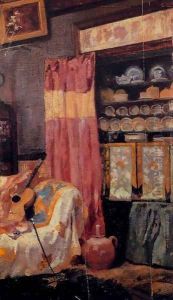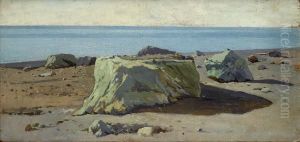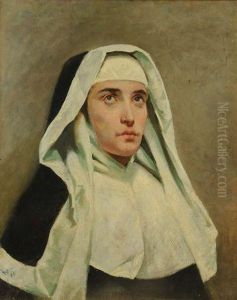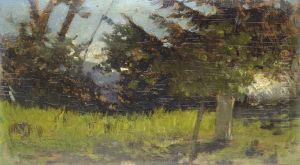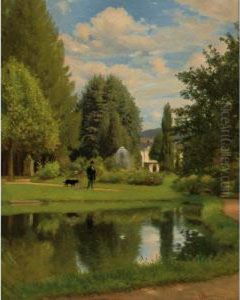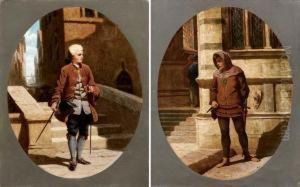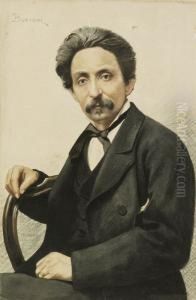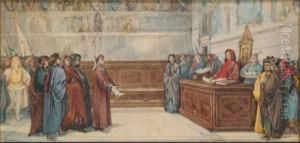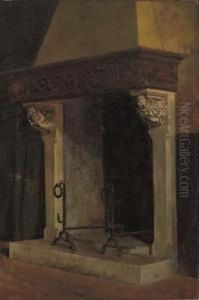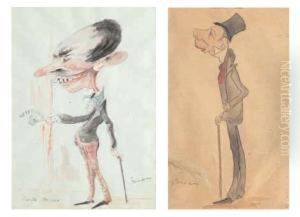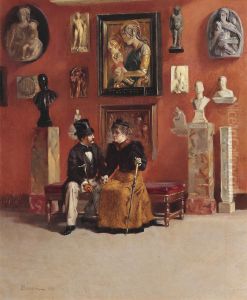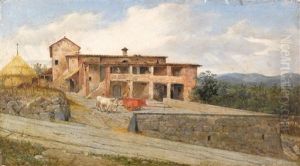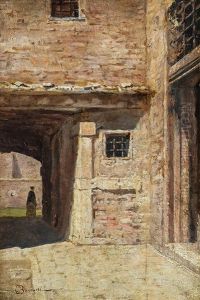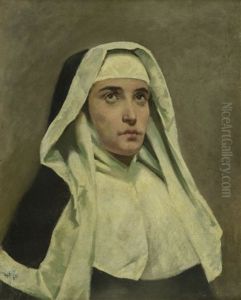Odoardo Borrani Paintings
Odoardo Borrani was an Italian painter and printmaker associated with the Macchiaioli group, who were forerunners of the Impressionists in France. Born on August 22, 1833, in Pisa, Italy, Borrani initially started his career with an apprenticeship under a decorative painter, moving later to Florence to study at the Accademia di Belle Arti. There, he met artists who would later form the Macchiaioli group, such as Giovanni Fattori, Silvestro Lega, and Telemaco Signorini. The Macchiaioli sought to capture the light, color, and atmosphere of the natural landscape through quick brushstrokes and a focus on patches of color ('macchie' in Italian).
Borrani's early work was influenced by the historical Romanticism of the time, but his style evolved as he became increasingly involved with the Macchiaioli movement. In the 1850s, Borrani fought in the Second Italian War of Independence, an experience that influenced his subsequent art, as he began to incorporate themes of social realism and patriotism. His work during this period included both historical subjects and scenes from contemporary life.
In the 1860s, Borrani became a central figure in the Macchiaioli group, participating in their discussions at the Caffè Michelangiolo in Florence and exhibiting with them in various shows. He worked on plein air paintings, capturing the Tuscan landscape with a focus on naturalistic color and light. Borrani's subjects ranged from rural scenes and everyday life to the Arno River and the countryside around Florence.
Later in life, Borrani also became involved in teaching. He was a significant influence on the younger generation of artists, imparting the Macchiaioli principles of painting directly from nature and the importance of light in art. He continued painting and exhibiting his work until his death on September 14, 1905, in Florence. Today, Borrani's paintings are recognized for their contribution to the development of modern Italian art and can be found in museums and collections across Italy and beyond.









